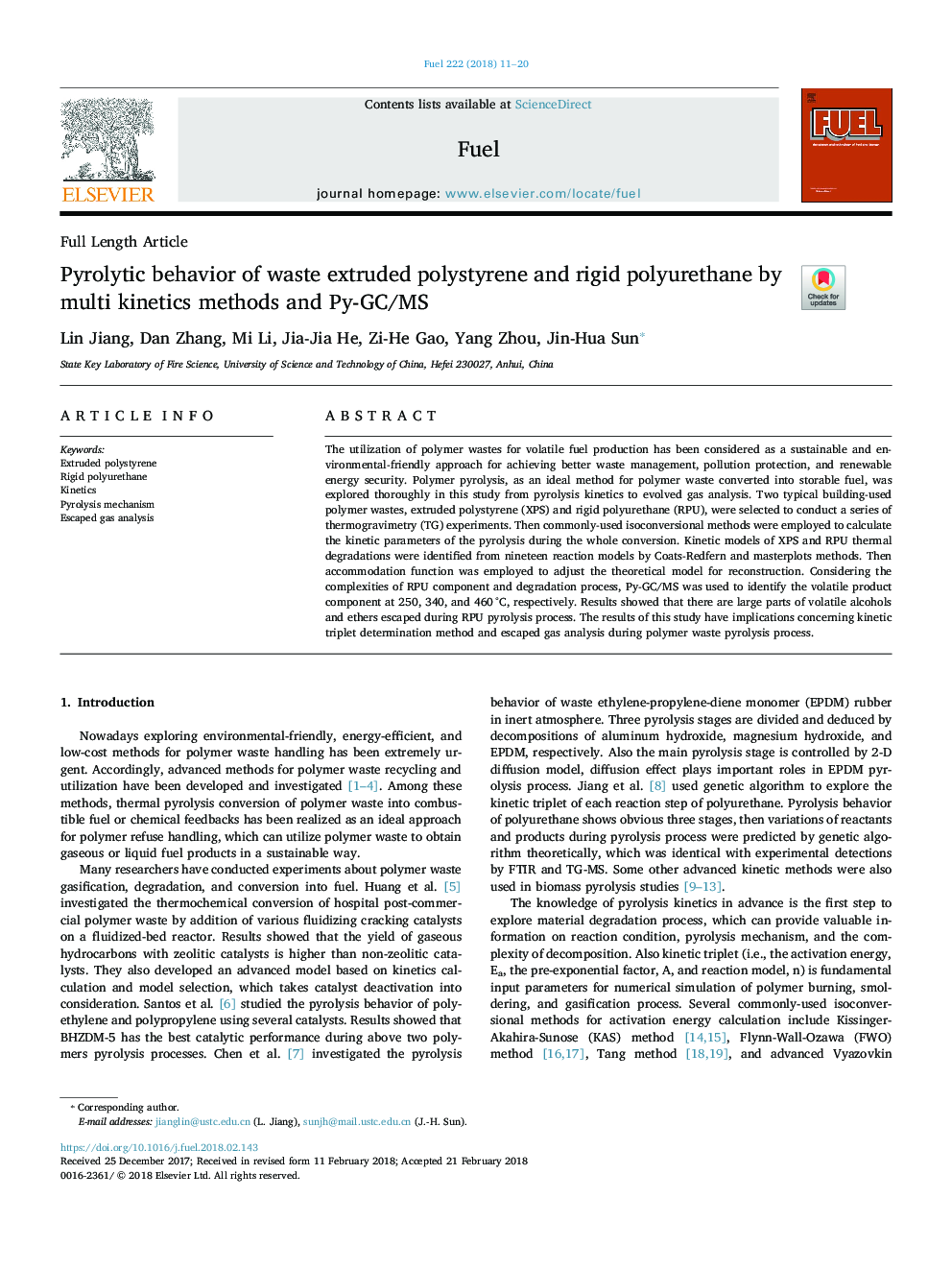| Article ID | Journal | Published Year | Pages | File Type |
|---|---|---|---|---|
| 6631326 | Fuel | 2018 | 10 Pages |
Abstract
The utilization of polymer wastes for volatile fuel production has been considered as a sustainable and environmental-friendly approach for achieving better waste management, pollution protection, and renewable energy security. Polymer pyrolysis, as an ideal method for polymer waste converted into storable fuel, was explored thoroughly in this study from pyrolysis kinetics to evolved gas analysis. Two typical building-used polymer wastes, extruded polystyrene (XPS) and rigid polyurethane (RPU), were selected to conduct a series of thermogravimetry (TG) experiments. Then commonly-used isoconversional methods were employed to calculate the kinetic parameters of the pyrolysis during the whole conversion. Kinetic models of XPS and RPU thermal degradations were identified from nineteen reaction models by Coats-Redfern and masterplots methods. Then accommodation function was employed to adjust the theoretical model for reconstruction. Considering the complexities of RPU component and degradation process, Py-GC/MS was used to identify the volatile product component at 250, 340, and 460â¯Â°C, respectively. Results showed that there are large parts of volatile alcohols and ethers escaped during RPU pyrolysis process. The results of this study have implications concerning kinetic triplet determination method and escaped gas analysis during polymer waste pyrolysis process.
Related Topics
Physical Sciences and Engineering
Chemical Engineering
Chemical Engineering (General)
Authors
Lin Jiang, Dan Zhang, Mi Li, Jia-Jia He, Zi-He Gao, Yang Zhou, Jin-Hua Sun,
